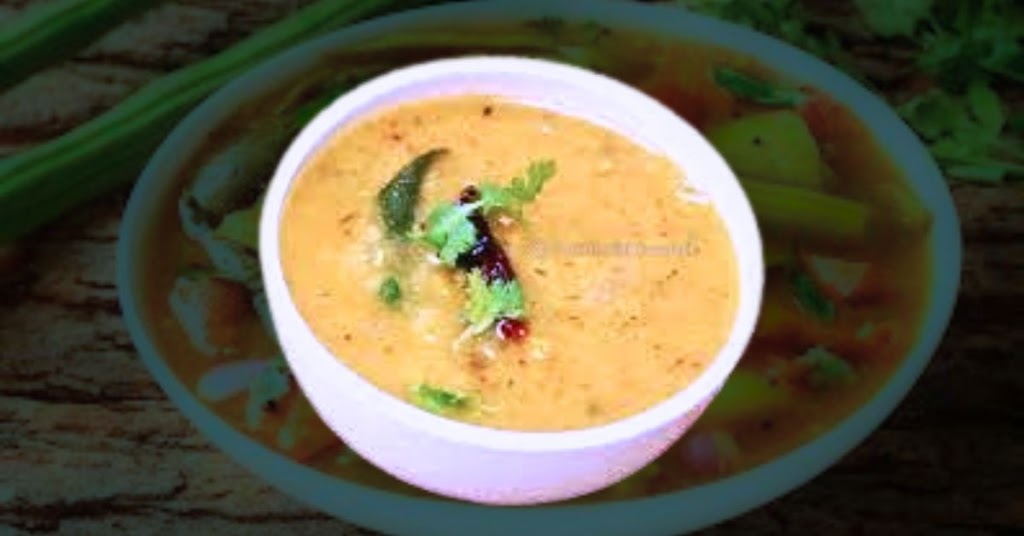Aromatic, spicy, and bursting with flavors, the sambar recipe is a beloved staple in Indian cuisine. Traditionally, the sambar recipe is laden with various vegetables, harmoniously melding together in a tangy, tamarind-infused broth. In this blog post, however, we will introduce a delicious twist a sambar recipe without vegetables. Yes, you read that right! Let’s dive into the delightful world of this culinary wonder.
Ingredients and Preparation
Ingredients
- 1 cup Toor Dal (Split Pigeon Peas)
- 1 tsp Turmeric powder
- Salt to taste
- 2 tsp Sambar Powder
- Tamarind, a small lemon-sized ball
- Asafoetida (Hing), a pinch
- Mustard seeds, 1/2 tsp
- Curry leaves, a few
- Red chilies, 2-3
- Coriander leaves for garnishing
- 2 tbsp Oil or ghee
Preparation Steps
- Rinse the Toor Dal and soak it for about 30 minutes.
- Pressure cook the dal with a teaspoon of turmeric and a pinch of asafoetida till it’s soft and mushy.
- Soak the tamarind in warm water for 10 minutes and extract its juice.
- In a pan, heat oil or ghee. Add mustard seeds and let them crackle.
- Add the red chilies and curry leaves. Saute for a few seconds.
- Mix in the sambar powder and saute for a minute.
- Add the tamarind extract, and salt, and bring it to a boil.
- Add the cooked dal, mix well, and simmer for about 10-15 minutes.
- Garnish with coriander leaves and serve hot.
Flavorful Alternatives
While this recipe skips the vegetables, it doesn’t compromise on flavor. You can add numerous ingredients to enhance the flavor and texture of your sambar.
- Lentils: Different lentils like urad dal (black gram) or masoor dal (red lentils) can be used for variety. They lend a unique flavor and texture to the sambar.
- Spices: Experiment with different spices such as cloves, cinnamon, and black pepper to add more depth to the flavor of your sambar.
- Herbs: Fresh herbs like mint or basil can offer a refreshing twist to the traditional recipe.
Remember, the beauty of cooking lies in experimentation. Feel free to tailor the recipe to your taste and dietary preferences.
Tips and Tricks
- Tamarind Extract: The sourness of tamarind is crucial to the flavor of sambar. If tamarind is unavailable, you can substitute it with a couple of teaspoons of lemon juice or vinegar.
- Sambar Powder: While you can buy pre-made sambar powder, making your own at home can elevate the flavor of your sambar significantly.
- Serving: Sambar pairs beautifully with rice, idli, dosa, and vada. It’s a versatile dish that can make any meal hearty and fulfilling.
Conclusion – Sambar Recipe Without Vegetables
Sambar without vegetables might seem like a deviation from the norm, but it’s a testament to the versatility of this classic dish. It’s simple yet flavorful, humble yet hearty. It showcases the magic of Indian spices and the comfort of lentils in a soulful symphony of flavors. We invite you to try this unique twist on the traditional sambar and share your experience with us.
FAQs
Q: Can I use other types of dal instead of Toor Dal?
A: Yes, you can use masoor dal (red lentils) or a mix of dals for a different flavor.
Q: How long does it take to cook sambar?
A: The preparation time is around 10 minutes, and the cooking time is approximately 30 minutes.
Q: Can I refrigerate the sambar for later use?
A: Yes, you can refrigerate the sambar for 2-3 days. Heat it well before serving.
Q: Can I add coconut to this sambar recipe?
A: Yes, adding grated coconut or coconut milk can add a rich flavor to the sambar. You can add it along with the tamarind extract.

21 thoughts on “Sambar Recipe Without Vegetables – Toor Dal Sambar Recipe”